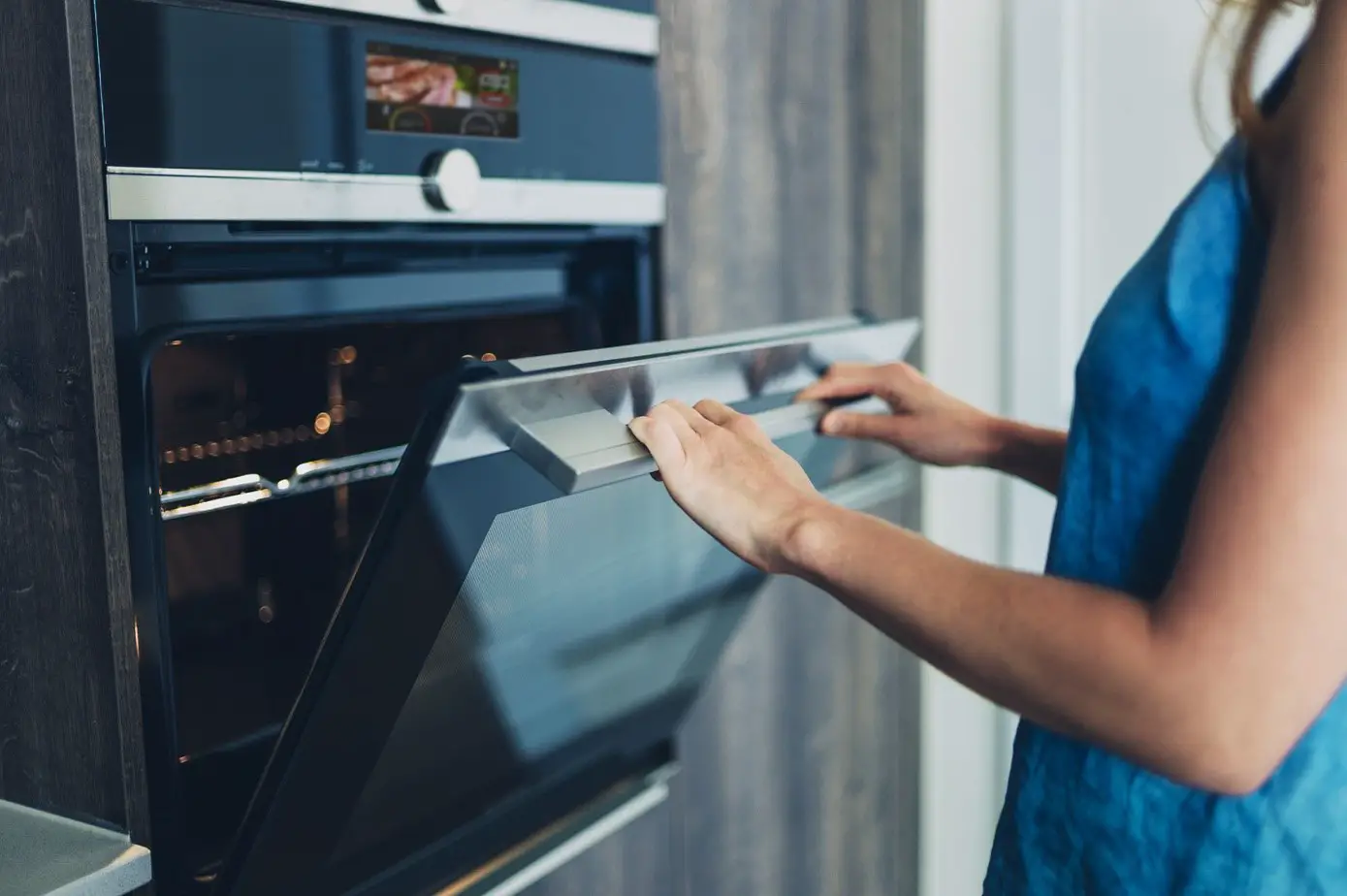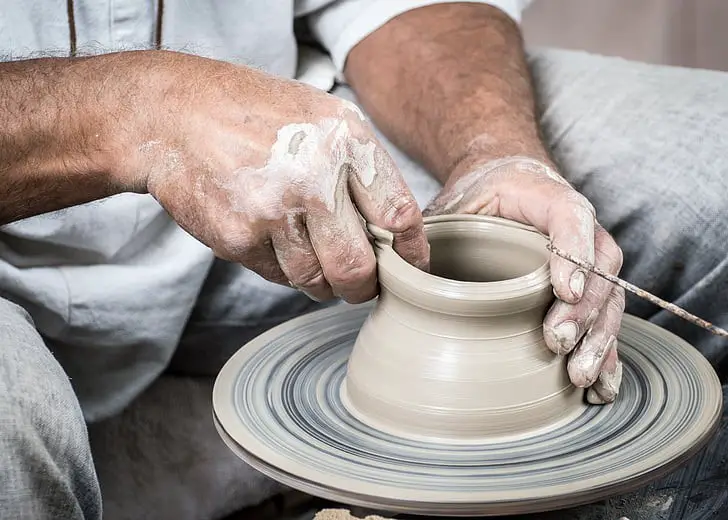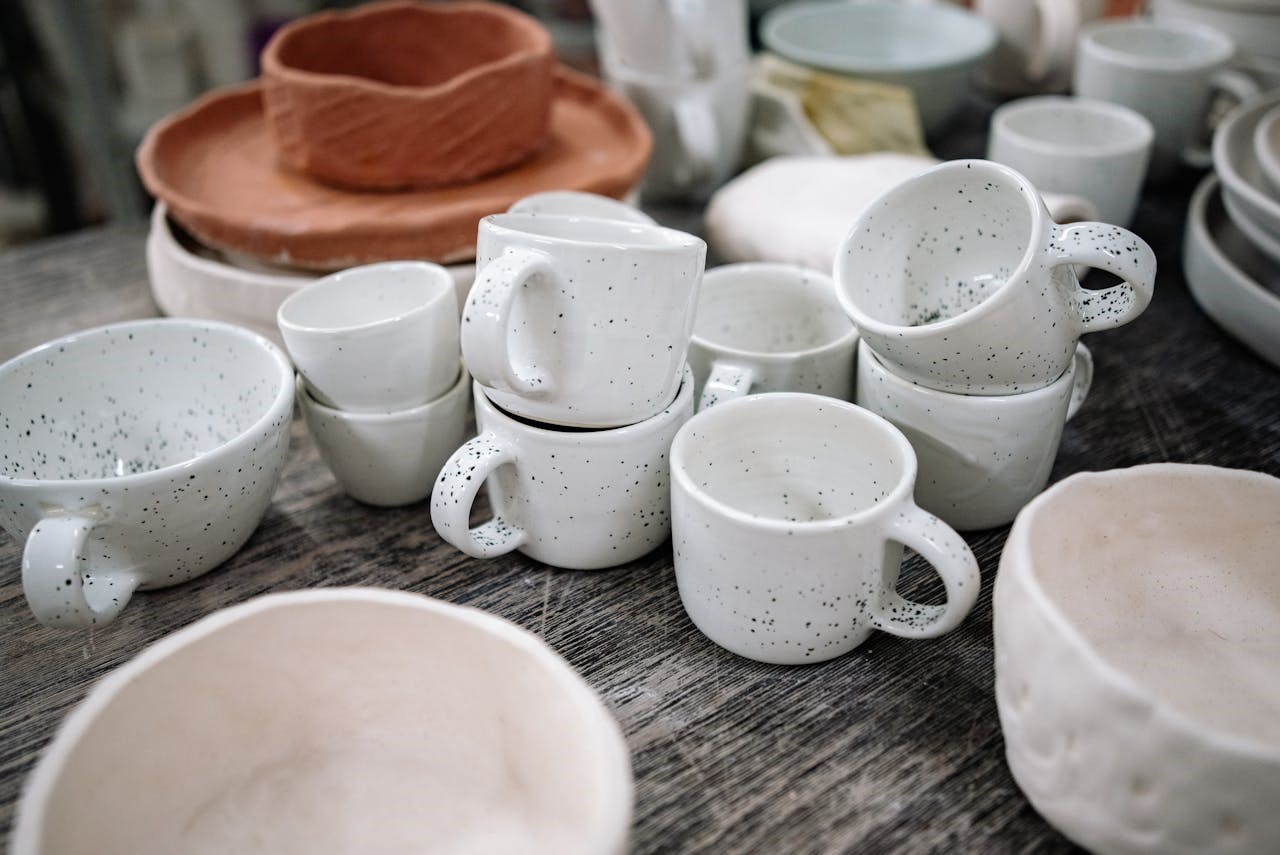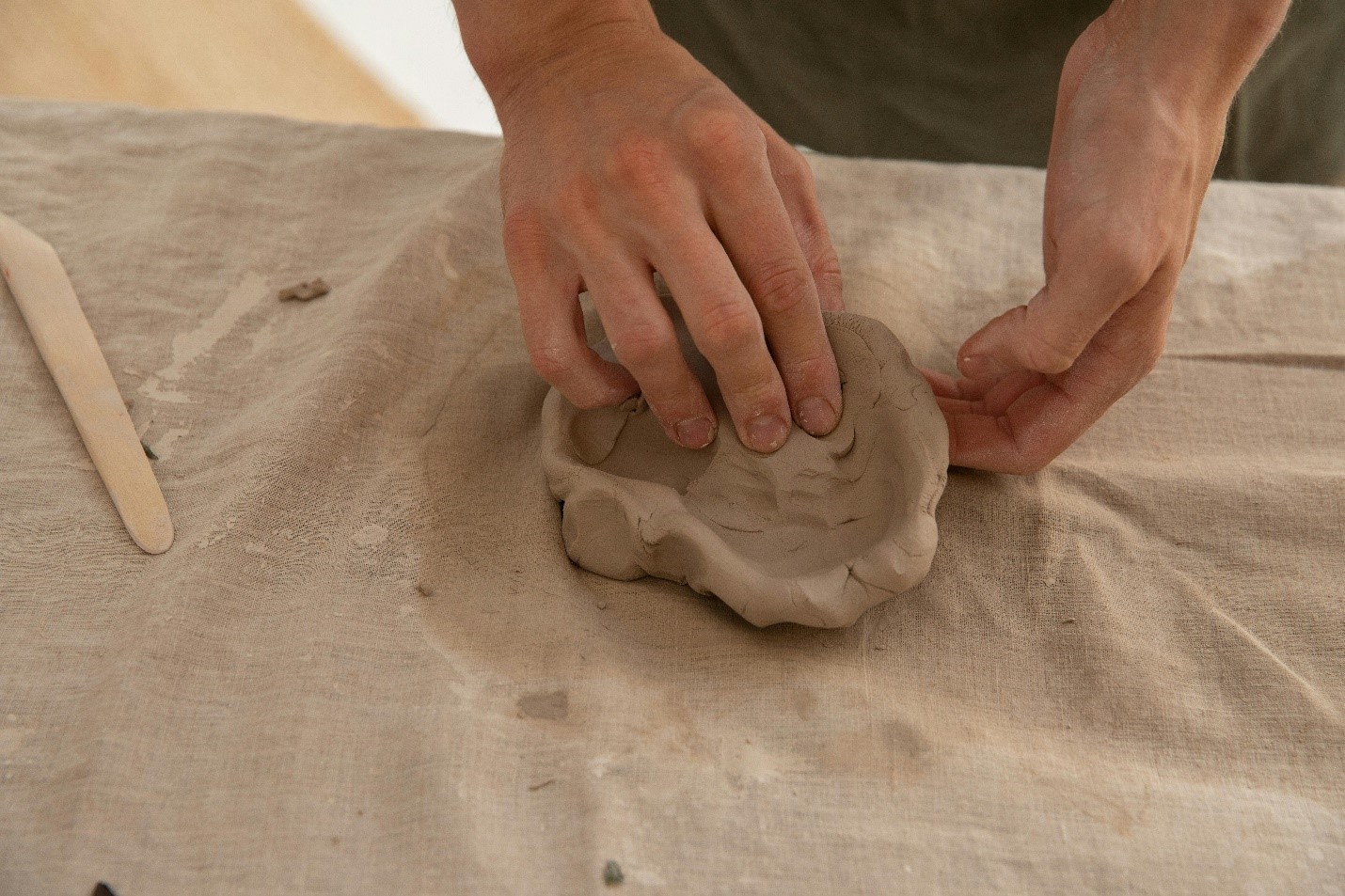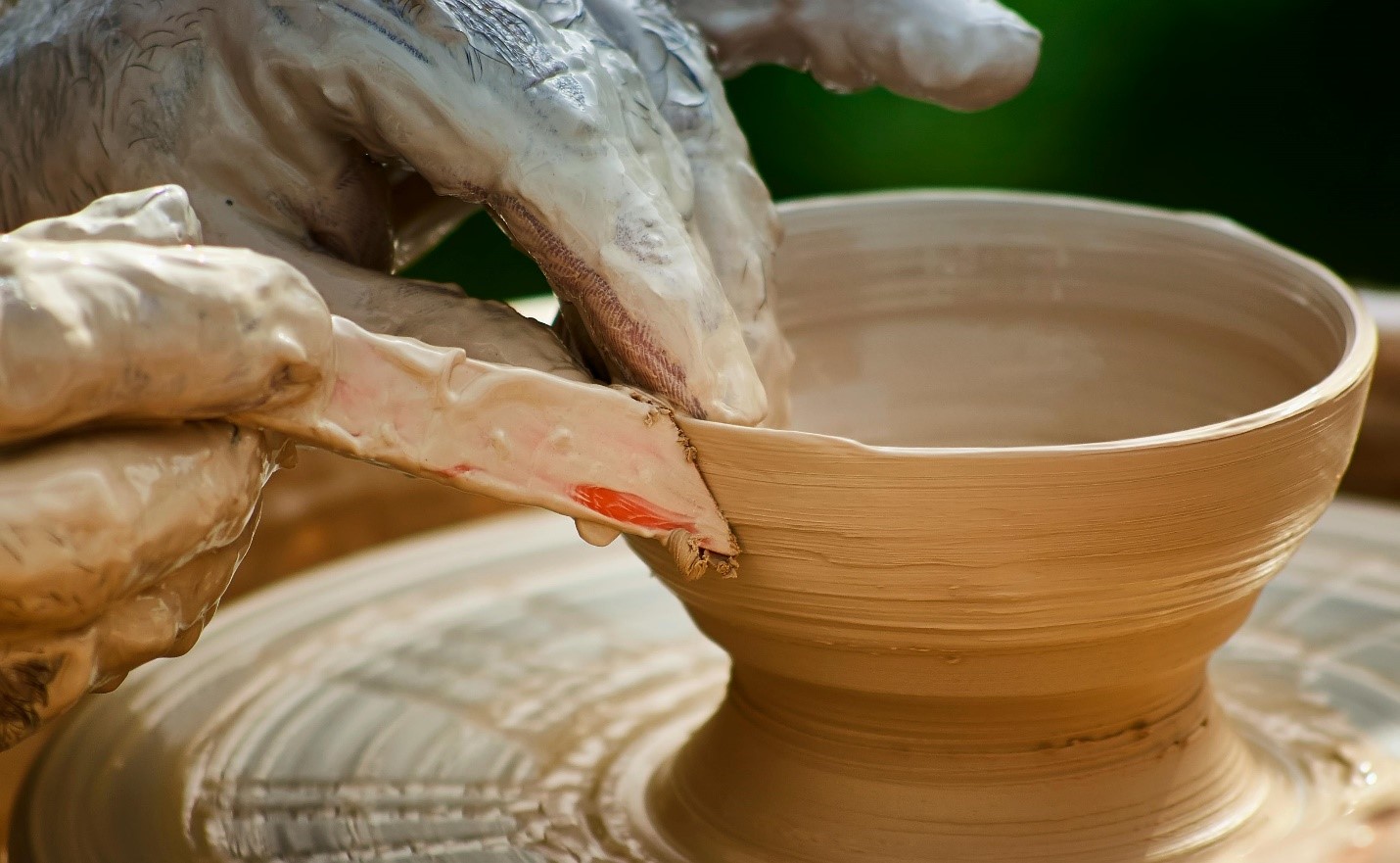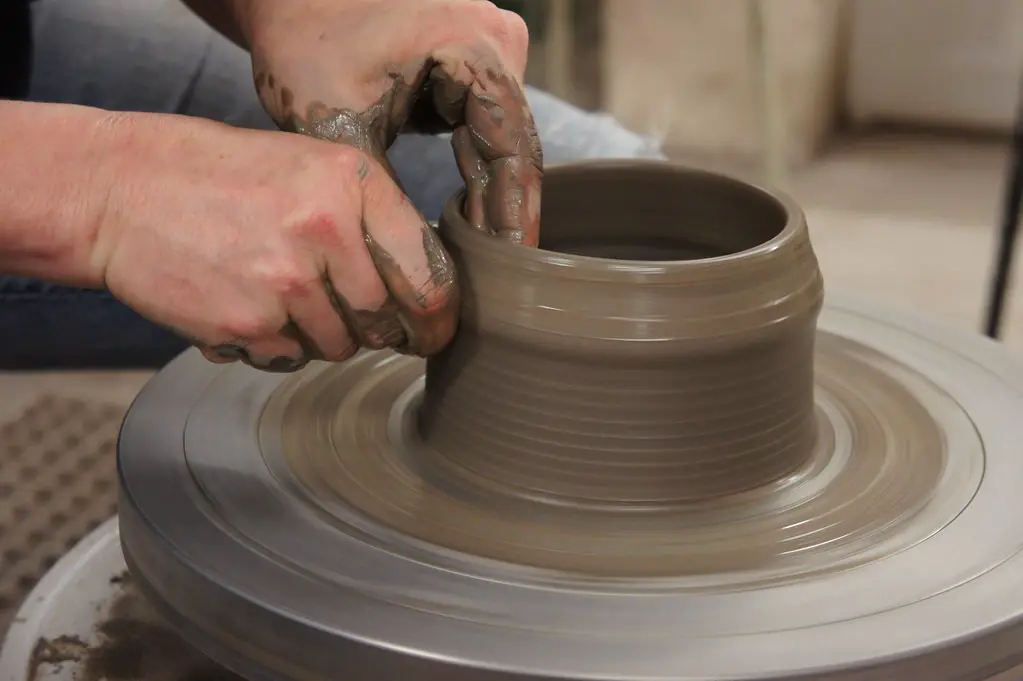You don’t necessarily need to have a knack for clay throwing in order to create some amazing craft items. A simple model created with hands can be baked in your home oven. However, you need to select a clay variant that is suited for baking purposes. So, how would you know which clay is ideal for your home oven?
Let us get straight into it!
Hardening vs Non-Hardening Clay
You can work with 2 types of pottery clay that include non-hardening and hardening variants. The hardening variants tend to harden in 3 different ways that include:
- Via kiln firing
- Via oven Polybaking
- Air-drying
On the other hand, non-hardening clay tends to be reusable and malleable. Most of the hardening clay variants can be hardened in your home oven as compared to air-drying or kiln firing. Both these clay variants can be used for creating permanent art pieces, vessels, or figurines.
Which Clay Is Ideal for Your Home Oven?
Before you start shopping for desired clay, you need to ensure that it can actually be baked in the oven. The best clay variant that can be baked in the home oven is no doubt polymer clay. You can also bake air-dry clay in a home oven for faster drying. However, it isn’t baked per se. Rather it just speeds up the moisture evaporation process.
So, polymer clay is an undefeated winner when it comes to baking in the home oven. You can bake both polymer clay as well as air-dry clay in the home oven.
Polymer Clay: What Is It?
Polymer is versatile modeling clay made from PVC or Polymer Polyvinyl Chloride base. It tends to stay soft when kept at room temperature and left uncured. However, it hardens after baking in the home oven at a manufacturer-recommended temperature.
Polymer clay is available in a range of colors that include light pastel hues going all the way to vividly bright colors. It can be crafted with special effects such as metallic, mother pearl, granite, and more. It attains a permanent shape post-curing or baking in an oven. An ideal choice for polymer clay is the DeeCoo Store Polymer Clay which comprises 70 vibrant colors. It is perfect for your oven-baking needs and comes with multiple accessories for easy crafting.

However, the end result might vary depending on how long your baking time was and the shape or thickness of your model. You might also need some special products such as polymer-compatible glue or surface finishing to ensure you get the perfect output. Moreover, polymer clay can be expensive compared to air-dry clay.
| Polymer Clay Features | Description |
| Texture | Very malleable before baking |
| Ideal Curing Temperature | 129oC-135oC |
| Curing Time | 15 Min per 1/4th of an inch or 6mm thickness |
| Toxicity | Non-toxic but releases irritating fumes when burnt |
| Safe for Children | Yes, but it should not be consumed (Must be used under adult supervision) |
Which is the best home oven for polymer clay baking?
In order to bake polymer clay, you can make use of any standard oven available at your home as long as it maintains the right temperature throughout the baking procedure. Polymer clay baking is safe when done in a home oven. However, there is one thing debatable when it comes to dedicating an oven for your polymer clay crafting needs.
While some say you don’t necessarily have to have a separate home oven for baking polymer clay, some potters argue otherwise. Some brands might mix harmful chemicals into the clay to make it cheaper in terms of pricing. So, if you bake such polymers in your home oven, the toxic fumes might stay within and then mix in when you heat up your food.
Using a small home oven is fine. However, a tiny oven might lead to higher burning issues of the polymer clay. So, it is better to ensure that you bake your polymer clay in a large oven. Doing this ensures that your clay is heated up evenly from all sides as opposed to being exposed to one-sided heat.
It is better to use a convection oven as it houses a fan to help with an even temperature distribution. Most home ovens do have a digital readout. However, it doesn’t necessarily mean that your home oven is controlled digitally. It is mostly mechanical guesswork.
Most home ovens tend to be wildly incorrect. You might see one temperature reading on the screen, but the temperature inside could be way more or less. This is why it is better to get another thermometer and place it beside the piece to ensure you know the exact temperature.
All brands are different when it comes to the formula for creating polymer clay. One works for you doesn’t mean another will work the same way. You need to test and try brands of your choice to see if it works for you. Prepare a small batch to ensure you don’t waste a lot of product during the testing phase.
A home oven and a microwave aren’t one and the same. You definitely cannot bake your polymer clay in a microwave. Alternatively, you can use options such as halogen ovens, Nu-Wave ovens, or even turkey roasters.
Does Polymer Clay Produce Toxic Fumes During Baking?
Standard polymer clay doesn’t produce any toxic fumes if it is baked at the temperature recommended by the manufacturer. However, it runs the risk of burning when baked at a temperature that is higher than 350oC.
When polymer clay burns, it tends to release an irritating fume comprised of hydrogen chloride. Some sources state that burnt polymer tends to release chlorine gas. However, that isn’t the case. If your polymer clay starts burning, make sure you leave the premises for a couple of hours and wait for the fumes to clear off.
The fumes might be nasty in terms of smell and might cause irritation among people who suffer from breathing problems. So, it is advised that you wear a safety mask in case your clay burns off due to uncontrolled baking temperature.
Practice Safety With Polymer Clay
When baking polymer clay in an oven, it is important to practice safety. Here are some pointers to keep in mind:
- Always work in a well-ventilated space to mitigate any potential fumes. If you do not have a proper ventilation system in the room you are working in, ensure that it does have at least a window to allow the fumes to escape.
- Polymer clay tends to be somewhat brittle after being baked in an oven. So, make sure you do not create an item out of it that would bear significant load. Moreover, it isn’t food-safe. So, using it for items such as cups, plates, or utensils isn’t advised.
- With time, polymer clay can fade out if kept in a place exposed to UV radiation or sunlight. So, it is important to keep it away from direct sunlight to maintain its color vibrancy. Moreover, you can also add a coating of protective varnish or sealant to make it highly durable after oven baking.
- If you are someone who has an environment-friendly lifestyle, polymer clay might not be the right thing for you. Polymer clay is made of synthetic and non-biodegradable materials. Unlike natural clays, it doesn’t break down naturally in the environment. So, if you are looking for something environment-friendly, polymer clay isn’t the right thing for you. You can work with alternatives like air-dry clay.
- After you have baked the polymer clay in the oven, make sure you keep it away from places that get too much heat. This could be an area close to your oven or direct sunlight. When exposed to very high temperatures, the polymer clay becomes deformed or soft.
- Make sure you properly condition and knead your artwork to avoid air bubbles from being trapped. These bubbles tend to create imperfections in the finished pieces.
What Can Go Wrong When Baking Polymer Clay In An Oven?
- Overheating:
Depending on the brands and materials used in polymer clay, the oven baking temperature can vary drastically. So, it is important to read the manufacturer’s instructions and bake at the recommended temperature. If the clay is fired at a temperature higher than the recommended range, the artwork can emit toxic fumes, burn, discolor, or even result in a fire hazard.
- Underbaking:
Polymer clay might not bake evenly in your oven, especially if it has the tendency for uneven heating or hot spots. Placing the clay in the center of the oven and opting for an oven with a convection fan will aid in a better baking process.
- Changes In Color:
Some brands of polymer clay can darken or even change color during the baking process. So, it is important to test a sample piece to avoid any unexpected color changes.
- Cracking:
Polymer clay tends to crack during the baking process if it is rolled too thin. This can also happen if there is any air bubble trapped within the clay. So, make sure you wedge the clay properly and roll the clay to the proper thickness to avoid cracking.
- Baking On Incompatible Surfaces:
Baking your polymer artwork on incompatible surfaces such as glass or bare metal can lead to sticking or shiny spots on the clay. To avoid this, make sure you use compatible baking surfaces such as parchment paper, ceramic tile, or a silicone-based baking mat.
- Loss Of Detail:
If your artwork features fine details with delicate elements added to it, these can be distorted or lost during the oven-baking process. To avoid this, it is important to build your artwork on a durable base. This will act as a skeleton for the artwork maintaining its structure during and after the oven baking process.
- Presence Of Dust Or Debris:
A little bit of dust or debris is fine but things can take a wild turn if your artwork has a lot of dust or debris affecting the final output. To avoid this, make sure you clean your oven and baking surface every time before you start the baking process. While doing so, you also need to keep in mind that baking the polymer clay can leave a residue that can transfer onto the clay.
- Use Of Incompatible Materials:
If your artwork comprises multiple parts, you might think of using glue to stick the pieces together. However, certain glue variants might not work well with polymer clay. Moreover, they might not be suited for oven baking too. So, always use materials that work well with polymer clay and stick to glue meant to withstand high temperatures.
Conclusion
So, if you know and trust the brand of your choice in polymer clay, you can go ahead and bake it in the home oven. However, you might want to start off with a smaller batch and work your way up as you mark down the best temperature that works for your polymer clay. Happy baking!

